Easy recipe for a classic French Crème Caramel, made extra light without cream. Our French family's favourite, it's made with whole milk and egg yolks for a silky, melt-in-the-mouth dessert.
Popular in Parisian restaurants, it's also a great make-ahead recipe at home served as individual portions or a large version. Want to know the difference with a French flan and crème brûlée? Read on below for more plus all my tips.
I just tried this today and it was perfect, Jill! I wouldn’t say I’m an amazing cook/baker, but this recipe was so easy and simple! - Ly
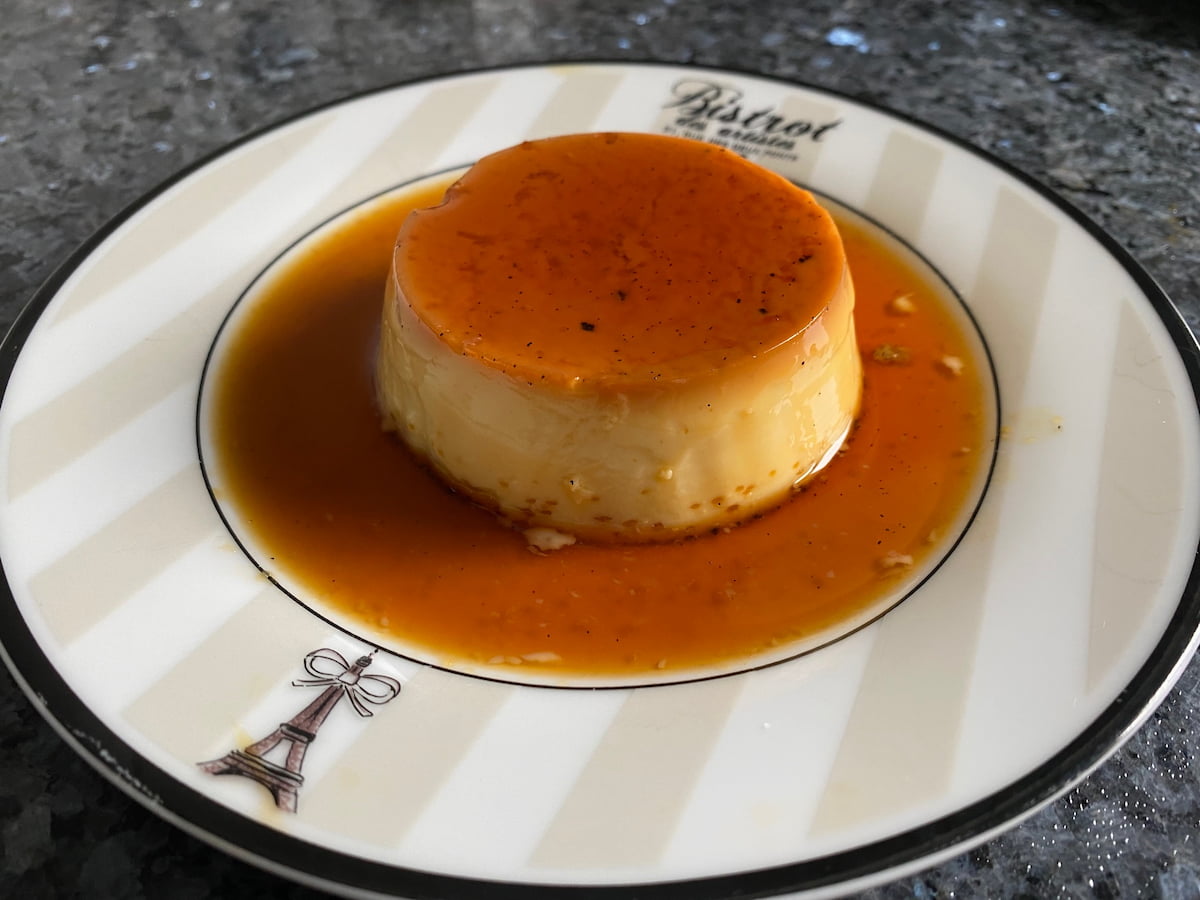
Best Make-Ahead Dessert Recipe
Thanks to the famous French chef, Auguste Escoffier who modernised French cuisine, the French crème caramel has been a staple on many dessert menus since the 1930s. It's a win-win in brasseries and restaurants as it's not only delicious but a most practical dessert too. It's cheap to make and can keep for up to 5 days in the fridge so it's easy to prepare a day or two in advance.
Today, it's still a popular classic in Paris. So make this at home, close your eyes and be transported spoon after spoonful to a Parisian brasserie.
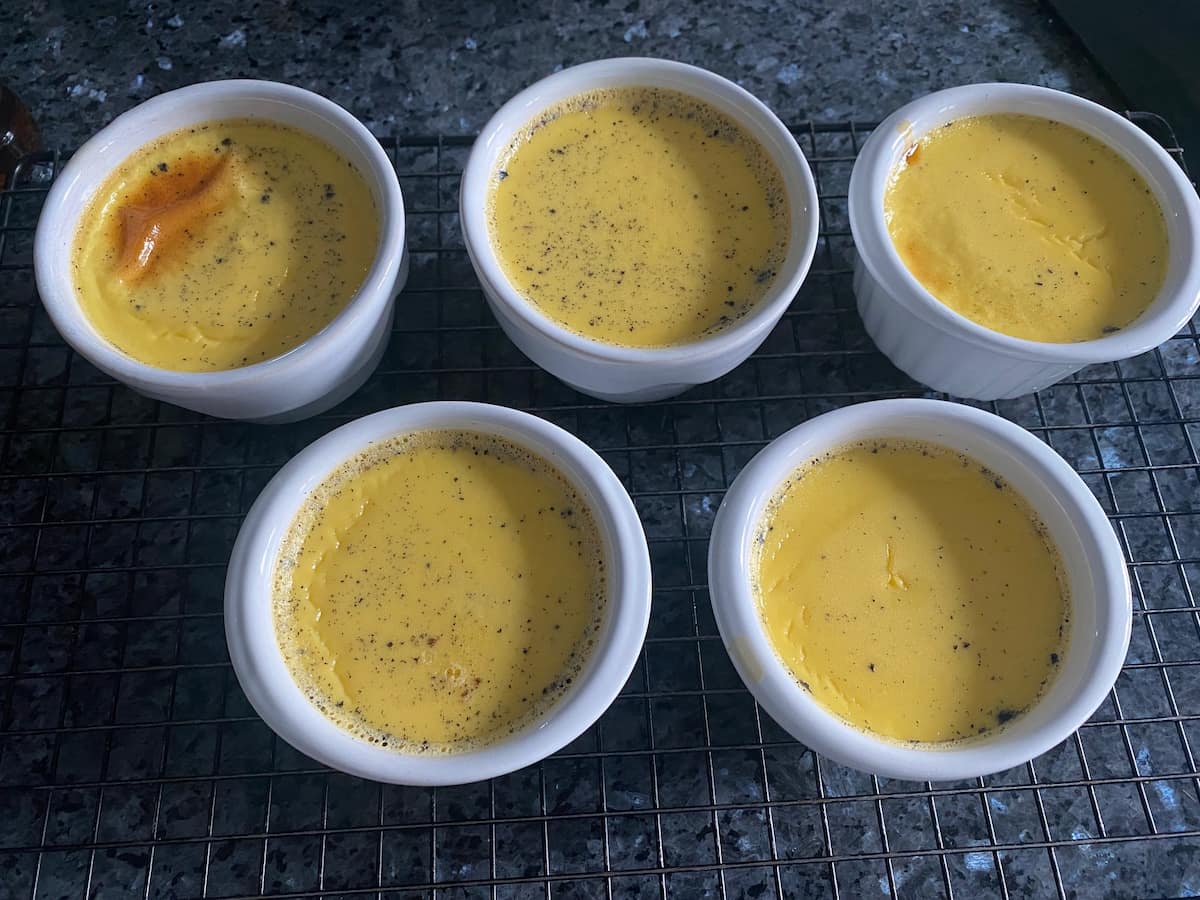
Not sure how to upturn them? I've got you covered in my demonstration video and in the tips below. It's easier than you think.
However, many cafés or brasseries serve them directly in their individual ramekins direct from the fridge. So, if you're worried about upturning them, don't worry. Serve it the Parisian Bouillon Chartier way!
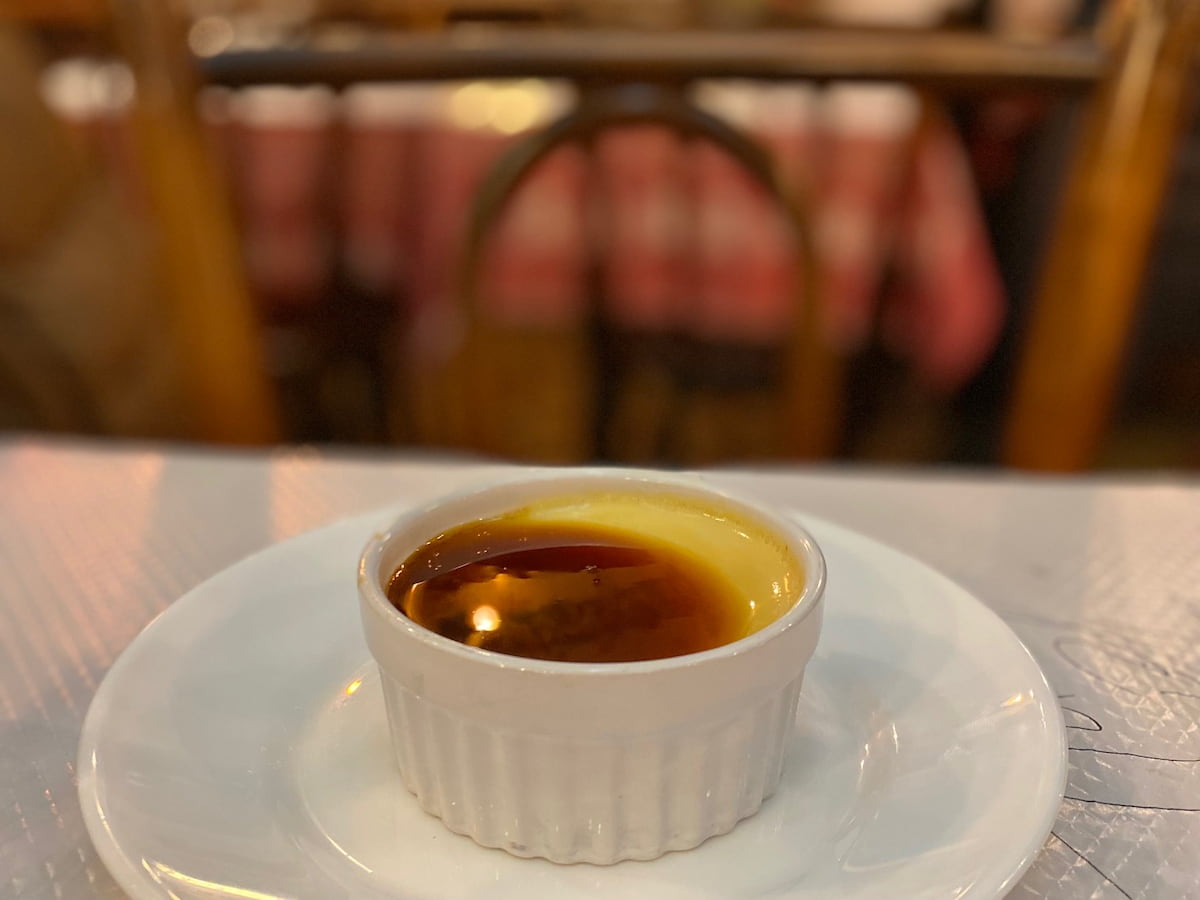
Large Crème Caramel
Madeleine, my French mother-in-law, makes her French Crème Caramel as a large family-sized version. When I first saw her make this when I arrived in France in 1992, I thought it was more difficult to make. Instead I discovered just how easy it was!
To make a large crème caramel, simply follow the recipe below. Instead of individual ramekins, use a large ramekin dish (cake/loaf tin, pyrex glass or pie dish) and bake for an extra 10-15 minutes.
Reduced Sugar
Please avoid packet mixes to make this, as they add far too much unnecessary sugar. That's one of the main reasons why we make our desserts homemade, to control the sugar content.
Many pâtisserie chef friends agree that too much sugar destroys flavour. So, as there is enough in the caramel, I reduced the sugar in the recipe's caramel custard - and nobody even notices! That way, we can enjoy the flavours of the vanilla and that amber caramel.
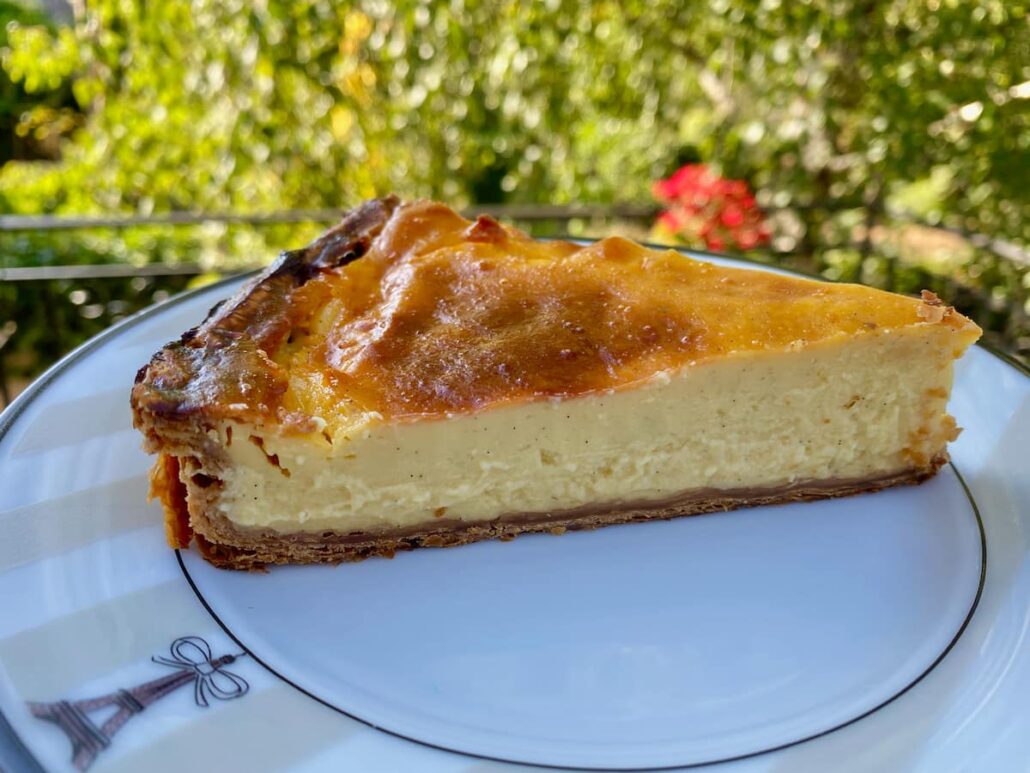
Is Crème Caramel the Same as Flan?
It's known in the rest of the world as Flan, particularly in South America and the Philippines. The French Crème Caramel is similar (if not the same) as flan but it doesn't use sweetened or condensed milk. In Japan, there's purin, a gelatine no-bake version and, thanks to my friend Nami who guest posted here, check out her Japanese recipe for Purin at JustOneCookbook.
At home, the French (including my in-laws) often call it a Flan aux oeufs au caramel - and a simple Flan aux oeufs doesn't even include caramel. It's also called a crème renversée, when served upside down.
So, why don't the French just call it Flan? The main reason is not to confuse a crème caramel with a Flan (pronounced flong).
Bought by the slice at our bakeries, the Flan pâtissier or Flan Parisien (Parisian flan) is a more compact custard made with flour with a slightly flaky pastry base (using either puff or shortcrust). Although labelled as 'Flan nature' or with variations - such as coconut, chocolate or even pistachio (try the one at KL patisserie - see my guide to the Best Tearooms in Paris), it's simply known in Paris and the rest of France as 'Flan'.
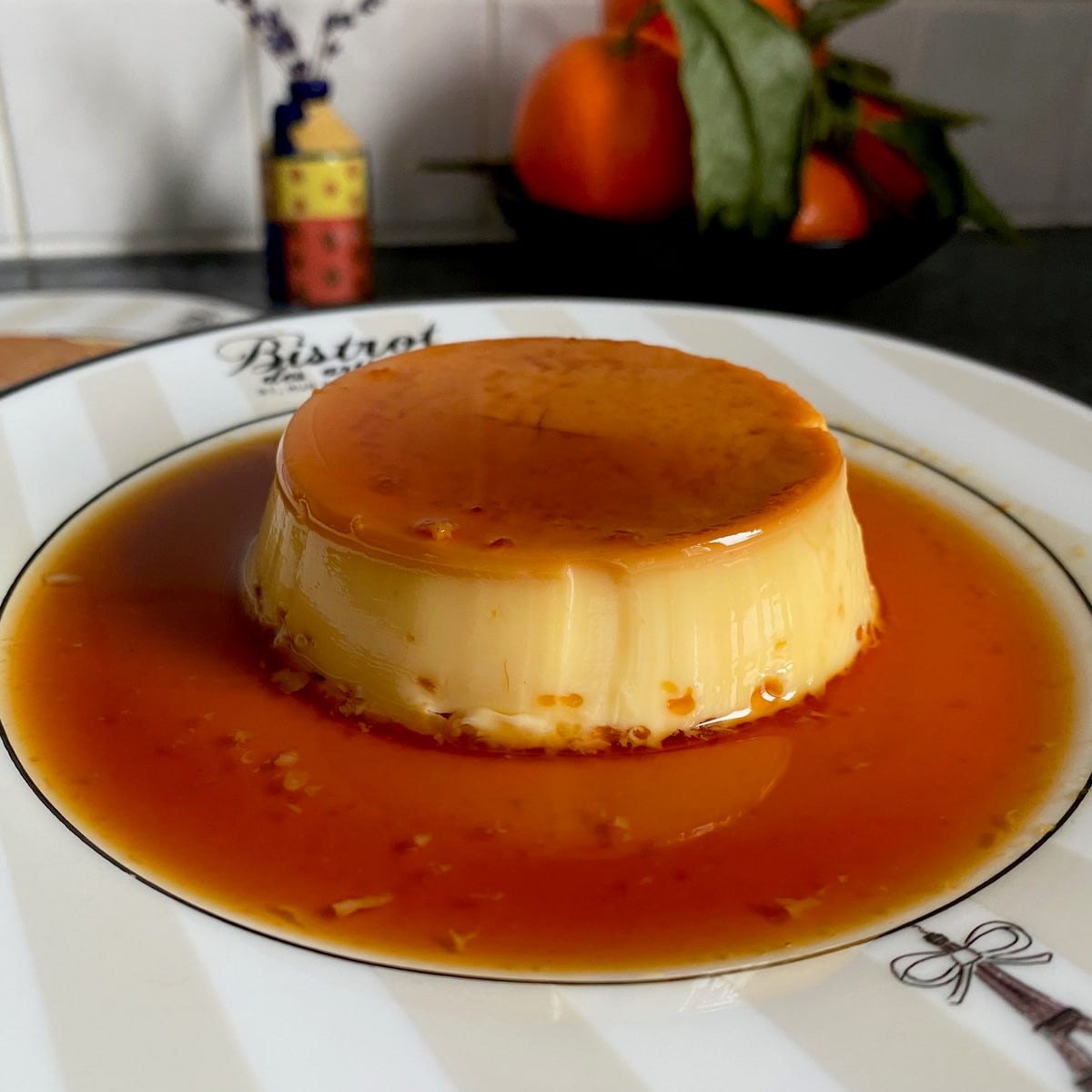
Difference Between Crème Caramel and Crème Brûlée
Both desserts are served chilled but prepared very differently. Whilst crème caramel has a smooth, creamy texture, it's almost gelatine-like (without using gelatine) and wobbly. It's much lighter made with full-cream milk (or a mixture of milk and some cream).
A crème brûlée is made just with cream and more compact. The sugar (normally cassonade or cane sugar) is sprinkled on top just before serving then either grilled or "burned" with a blow-torch to make a crackling top. The result is not smooth like the crème caramel, but in order to get to the cream the spoon cracks open the caramel.
See my milk chocolate crème brûlée recipe for more.
French Crème Caramel Ingredients
This classic French Crème Caramel is made with just 4 ingredients: milk, eggs, sugar and vanilla. The fresher the milk and eggs (organic or free-range), the better. It's best 'plain' with vanilla - but the recipe can easily take on many flavour variations: teas, coffee, herbs and orange work well. Just infuse in the milk in place of the vanilla.
For another infused type of French custard,
see my recipe for Crème Anglaise with Chai tea.
However, vanilla isn't plain if you use a sticky vanilla pod/bean or powder for this recipe. At a pinch, replace with good quality vanilla extract. Please do not use vanilla essence or aromas. The resulting taste is synthetic. Try both versions: you'll taste the big difference.
Over the years, I prefer this recipe, as I've experimented making Crème Caramel with milk and cream. In the end, this is by far the family's favourite, initially based on Raymond Blanc's recipe but with less sugar in the custard. It uses fresh whole (full-fat) milk - not cream. Plus, the addition of 3 egg yolks gives it that silky, melt-in-the-mouth feel of the custard, keeping it light.
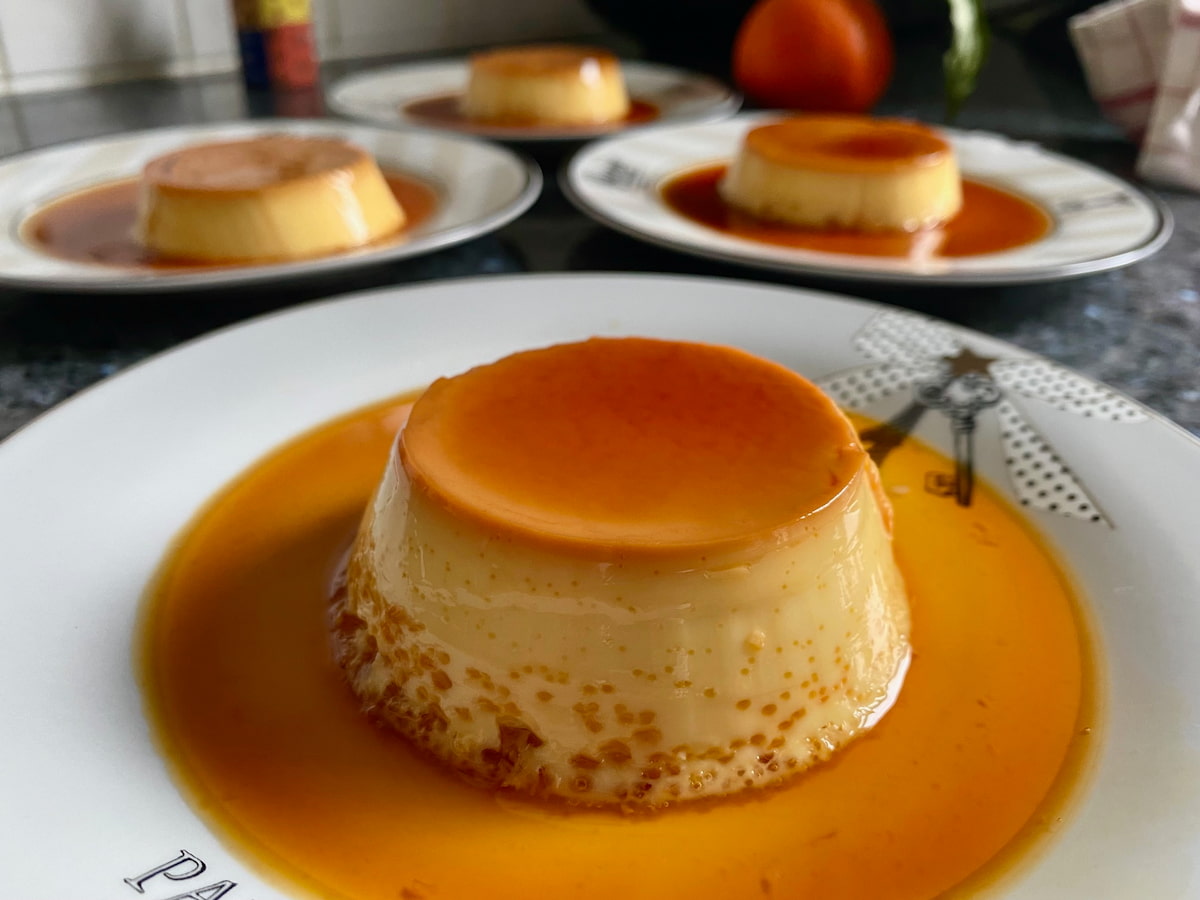
Cooking Tips - What Could Go Wrong With Crème Caramel?
This is such an easy recipe. For the complete step-by-step instructions how to make it, see the video below.
However, based on many mistakes made over the years, I've learned these cooking tips along the way:
- Air Bubbles. Don't worry. It's a sign the caramel creams have been slightly overcooked. An example of an overcooked cream is in the photo above but, even a little overdone, it's still soft and silky. As you can see, the creams behind were just right, but this one broke out as I left it in the oven another 10 minutes. The taste is still wonderful; it doesn't bother us - either at home or in many restaurants (personally, I love them!).
However, to avoid air bubbles, stick to the timing and place a sheet of baking paper at the bottom of the water bath (bain-marie) before filling with water in the oven. This stops the water from boiling up to the top of the dishes while cooking, enabling a more even temperature. - Why has my caramel turned white and solidified? This is either because the temperature was too low or you stirred the sugar while on the heat. Don't disturb the sugar crystals. Once it's on the heat, leave it alone (see my upcoming video) and ensure the heat is medium to high;
- Why do I have custard foam? Don't over-whisk after adding the warm milk. Whisk very gently just to combine then leave the custard to settle for a few minutes and the foam will subside. A few bubbles are ok!
- My vanilla pod is dry. Leave for a few days in a jam jar with a tablespoon of dark rum. The result is a stickier vanilla pod and the aromas are brought out at their best (I picked this one up from a vanilla seller at the market in Apt, Provence);
- I don't sieve the custard as I don't find it necessary. If you think you may have egg shell in there, then pass it through a sieve before pouring into the ramekins;
- How do I release the caramels easily? Run a sharp knife around the ramekin then upturn on to a lipped plate (to catch the juice). Either tap or jiggle the ramekin and it will eventually come out! However, to be really sure, place the ramekins for 30 seconds in the roasting tin filled with boiling water. It's so much easier.
What to Serve with French Crème Caramel
In Antoine's family, they always serve it on its own chilled. Likewise, in Parisian restaurants, it's rare that it comes with something on the side. At most, you'll find crème caramel served with some strawberries, raspberries, blueberries or exotic fruits.
When I had it for dessert at the Café Varenne recently (see my post, rue du Bac, Paris pastry street), they topped it with a salted buttery biscuit, a sablé breton (see my recipe for palets bretons to make yours at home).
What Can I Do with the Leftover Egg Whites?
As this crème caramel recipe uses 3 egg yolks, keep aside the egg whites. They can keep easily covered in the fridge for up to 5 days and freeze well. When ready to use, make:
- French tuiles or Financiers - quick to make and delicious served with crème caramel;
- Coconut macaroons (Rochers coco);
- Festive filled meringue snowballs with lemon and praline;
- Vacherin French ice cream cake;
- Dark Chocolate Mousse without cream;
- Chocolate Almond Cake, known as la Reine de Saba.
This French Crème Caramel recipe below does look long to make it home from scratch - but it's the opposite. I've given detailed recipe steps below to explain how easy it is. Et voilà !
Love caramel? Stick around (groan) and enjoy more caramel recipes:
- Tarte Tatin
- Salted Caramel Sauce (caramel au beurre salé)
- Sticky Orange Caramel Cake
- Salted Caramel Macaron Filling (a thicker caramel)
- Easy French Nougatine (great for topping desserts)

Classic French Crème Caramel
Ingredients
Caramel:
- 100 g (3.5oz/½ cup) granulated sugar
- 3 tablespoon water
Custard Cream:
- 500 ml (17 fl oz/2 cups) whole (full-cream) milk
- 1 vanilla pod/bean (or ½ teaspoon vanilla powder/vanilla extract)
- 2 large eggs (organic)
- 3 egg yolks (organic)
- 70 g (2.5oz/ ⅓ cup) sugar
Instructions
Make the caramel:
- Put the granulated sugar and water in a small saucepan. Shake the pan first to half dissolve the sugar in the water. Then, over a medium-high heat, leave the caramel to form without stirring. This should take about 10 minutes (don't multitask and leave the pan - keep your eye on it). It should start to smell like caramel when light brown. Swirl it around a bit and wait until the caramel is medium to dark brown (too light and it will just be too sweet; too dark, it will be bitter).
- Pour the amber caramel into 5-6 ramekin dishes (or one big dish), ensuring that it coats completely the base. Set aside to cool so that the caramel sets and immediately put the saucepan in the sink and soak in water, making it easier to clean later.
Make the custard cream:
- Preheat the oven to 170°C/340°F/150°C fan/Gas 3. Split the vanilla pod down the middle if using. Pour the milk into a medium saucepan, adding the vanilla (or other infusions if using) and just allow the milk to heat to simmering point (not boiling). Cover and take off the heat to cool slightly and remove the vanilla pod (scraping out the seeds and adding to the milk).
- Whisk the eggs, yolks and sugar vigorously in a medium bowl until paler. Pour in the WARM vanilla milk (not hot - if hot, temper by adding a little at a time) and whisk gently just until combined. Leave to rest for a minute to let the foam subside.
- Place the ramekins or large dish into a large roasting tin lined with baking paper. Pour the warm thin custard over the caramel in each ramekin, filling near to the top. Place the roasting tin in the middle of the oven and pour in warm-hot water around the ramekins or dish so that it comes to about half or ⅔ of the way up.
- Bake for about 40 minutes or until set (they're not cooked properly if there's a dip in the middle. A knife inserted should come out clean). Remove from the oven carefully, and after 10 minutes, gradually remove the ramekins onto a cooling rack. When cool, transfer to the fridge and chill for at least 2 hours - ideally overnight.
Video
Notes

This recipe post was first published 4 May 2018 but is updated with new photos, more explanatory text and a video.

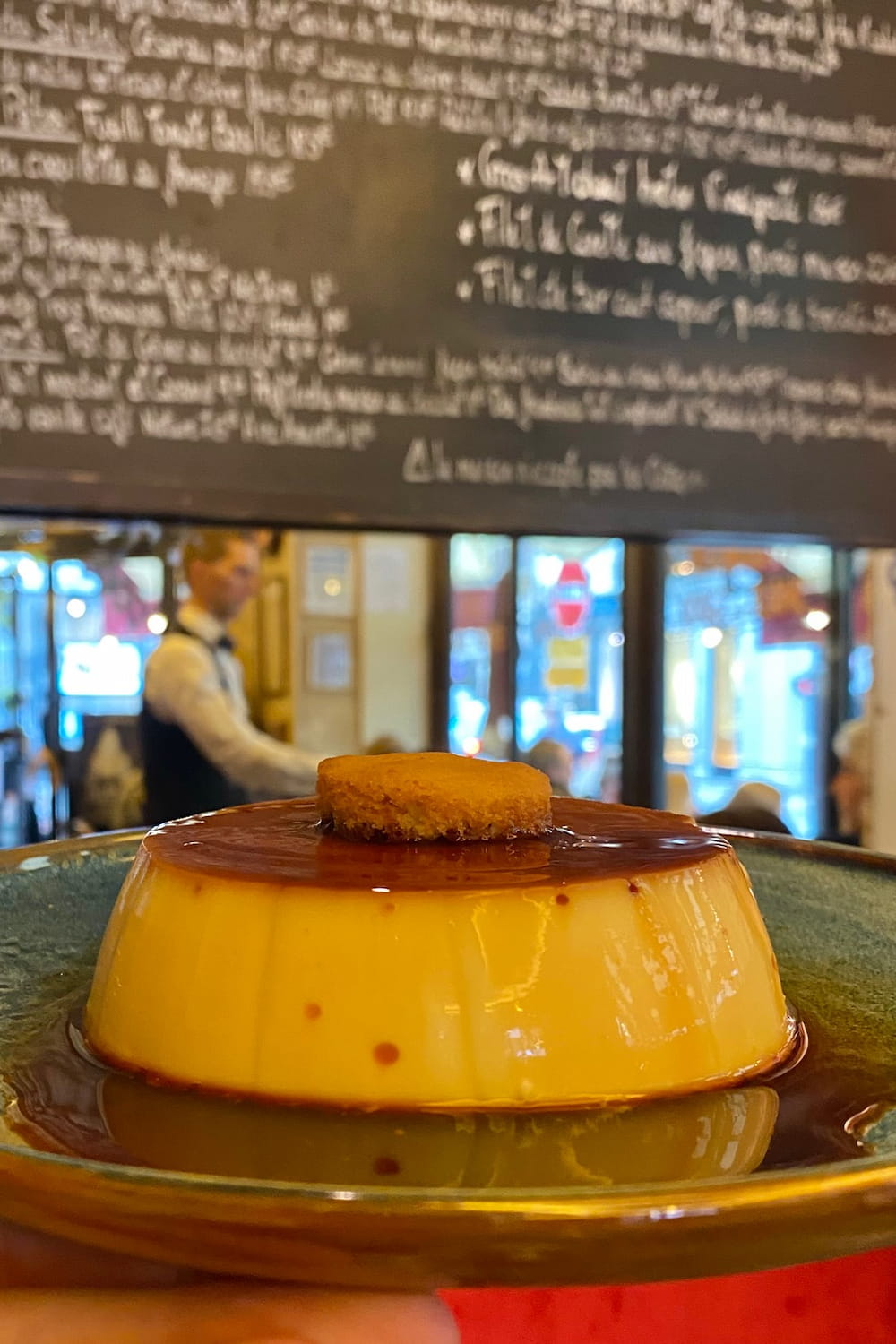
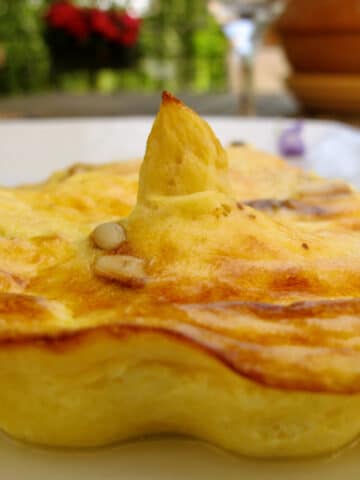
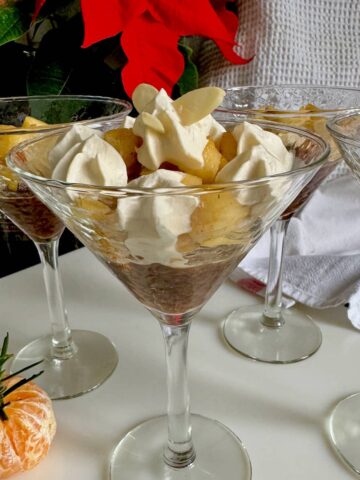
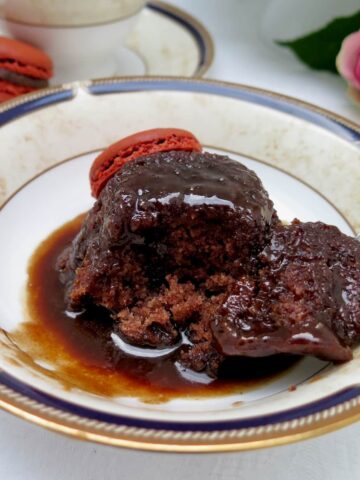
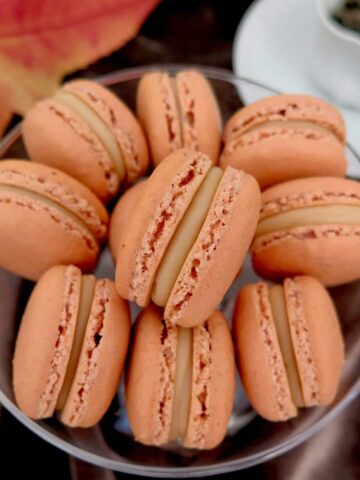

Emma
Excellent Creme Caramel - the best ever, and I've made a few over the years. There was complete silence around the dinner table as we all started eating it.
Jill Colonna
Love that, Emma. Thanks so much for popping back in to tell us. Have a delicious week!
Jill x
Bubs
We love crème Caramel and over the years I’ve used different recipes but yours is by far the best explained and the easiest to follow.
The end result - delicious!!! Thank you!
(I better stop writing before my husband grabs a third serving ?)
Jill Colonna
Hehe, that's lovely. Thank you so much for taking the time to review the recipe and for your very kind words. Really appreciated, Bubs.
Mallika Boruah
A hit every time.
Jill Colonna
Thrilled for you, Mallika. Thanks for your feedback!
Raj
thank for the great instruction and easy to under explanations. the custard was a little too silky and broke wheni turned it over...any ideas what I need to do differently?
Jill Colonna
Hi Raj,
You're very welcome! I honestly have given as many details as I can think of - both here in this post (under troubleshooting) and in my video. I hope you check them all out - all I can think of if 'too silky' (not that it sounds bad, being silky) is you perhaps changed out one of the ingredients or used a lighter milk? Best wishes, Jill
Demi
I have just tried this recipe. I love it! I will definitely come back here again when I need to make Creme Caramel again!
Jill Colonna
So happy to hear that, Demi. Hope you try the other recipes too - I have plenty of them for you!
Laila
This is my 4th time now making this recipe and it comes out beautiful every-time!! The clear instructions make it hard to mess up. Thank you so much for your hard work Jill.
Jill Colonna
Absolutely thrilled to hear, Laila. So happy you like this recipe. Thanks for your lovely words.
Lauren Dwyer-Long
Found the final result too 'eggy' but maybe its because i used vanilla extract instead of a vanilla bean 🙁
Jill Colonna
Hi Lauren,
Perhaps your vanilla extract wasn't great quality? As I say in the post, personally this dessert is best made with a vanilla bean or good quality powder/extract - otherwise it changes the whole taste. There are not many ingredients but they have to be the best you can find.
Katie
This flan recipe was absolutely amazing! One 6” cake pan was the perfect size for one large flan. My family ate all of the flan after just 30 minutes of me setting it on the table.
Jill Colonna
So happy you all loved this recipe, Katie. Thanks so much for your feedback. I hope you don't mind, but I added 5 stars to your review, as you had missed this part out. Please let me know, however, if you don't think this matches your glowing comment!
Update - the system won't let me add any stars (which makes sense)!
Katie
Yes! My goodness.. I meant to rate this recipe 5 stars but ended up posting my comment without rating it!
Jill Colonna
Thanks for the validation, Katie x
Victor K
Betty has made this quite a few times, we love it!
Jill Colonna
So thrilled to hear, Victor.
Rebecca
They’re still in the oven but look to be delicious. One thing although I added the warm milk to the eggs and sugar be very gently with a balloon whisk and it came out very foamy. I had to scrape the foam off before putting them in the oven
Jill Colonna
Hello Rebecca,
Glad they look delicious! Did you see my video? I talk precisely about the foam in more detail at 4:40 - it's not a problem! It's perfectly normal to scrape off any excess but did you let the warm milk settle before pouring? Please do give a review when you have finished entirely the recipe and tasted the end result. On tasting, I'm positive you would give it the 5 stars. Just saying. Jill x
Thomasina
I love this recipe because it is not too sweet. Thank you for explaining the difference between creme caramel and creme brulee. Ideal to make it in advance of a dinner party.
Jill Colonna
We don't have a particularly sweet tooth so happy you like this too, Thomasina.
chris Lowe
this recipe was always done in one round dish in my family...i had lost the ratio of eggs to milk. please advise for 6 people in a round pyrex dish, if i use 6 eggs how much milk and how long should the cooking time be.
many thanks
Chris
Jill Colonna
Hi Chris,
This is for 5-6 people and I mention how to make it for one big dish. Just follow the recipe and it's good to go for one large version too. Let me know how you like it. I love using egg yolks as well as the eggs to make it extra silky and custardy so this recipe doesn't just use whole eggs. As a result, it will be slightly different to your family's recipe but I hope you try this one. Jill
John FUN
Hello I have been looking for a good recipe for (a not so ordinary) caramel flan and this recipe looks primisisng, except that I always shun recipes calling fot yolks only, because I really don't have use for the whites and often end up discarding them. Would using whole eggs alter the taste or consistency of the custard negatively?looking forward to your reaction, kind regards
Jill Colonna
Hello, Bonjour John,
I understand your dilemma to cut the extra yolk corner - but it's totally worth using them, otherwise I wouldn't have added them to my recipe. The result wouldn't be the same so I encourage you to use the yolks on top of the whole eggs in the recipe. Please never discard your whites - they keep in the fridge for a few days and freeze well. The good news is that I have a growing collection of egg white recipes - many of which are quick and easy to make later! Let me know how you get on.
Lidia
Absolutely delicious Jill!
Jill Colonna
Thanks so much, Lidia. So happy you like the recipe!
Cynthia
Absolutely spot on recipe! Definitely will be making it again!
Jill Colonna
Thanks so much, Cynthia - and thanks for popping in!
Ly Nguyen
I just tried this today and it was perfect, Jill! I wouldn’t say I’m an amazing cook/baker, but this recipe was so easy and simple! I don’t have an actual oven, so I used a convection toaster oven and split the custard between four 9oz ramekins. I had to cook them for 1 hour and 10 minutes, but the tops got a little over cooked. Is there a way to fix that? I will definitely make these again! I’m planning on making your tuile cookies tomorrow using the egg whites I have from this recipe! Thank you so much for your amazing recipes!
Jill Colonna
Hello Bonjour Ly, thank you so much for your lovely words and so happy you like this recipe. If you don't want them too overcooked in future (depending on your oven), then I suggest placing some baking paper over the tops half way through cooking. So glad you're making the tuile cookies too - it's a delicious circle making goodies with yolks then having an excuse to make more with the whites!
Natalie
amazing recipe!
Jill Colonna
Thrilled you like it, Natalie. Thanks for popping in!
Jessica Barrister
Loved this recipe. Super silky and not too sweet! I want to make it in advance to share because I will not have time before the event. Would this keep in the fridge for a bit under 5 days in the fridge? And if so, how should it be stored?
Jill Colonna
Absolutely, Jessica. I say this already at the beginning. Just keep them in the fridge on a large plate covered with another large plate. Otherwise cover each with cling film. So glad you like the recipe!
Sophie
If I could give a rating above 5 I would! The recipe is amazing extremely easy and wonderfully delicious. I made it with goats milk
Jill Colonna
That's so lovely to hear, Sophie. Vive la crème caramel!
Bobbie Waldron
it looks very hard to get the right
texture
Jill Colonna
Do try the recipe, Bobbie. If you follow the instructions and video, you'll see it's much easier than you think!
Irene
I found this recipe by accident and tried it and I am glad I did because the texture is so smooth and so tasty! It’s one of my favorite recipe! merci beaucoup!
Jill Colonna
Thanks for your lovely words. So happy you like this, Irene. Help yourself to many more recipes like this. Happy holidays!
Ashley Zafirian
Can I double this recipe without messing it up
I have a party of 9 who I would like to serve
Jill Colonna
No problem - as long as you have a tin big enough to hold all of them for their oven water bath. Have a fun party, Ashley.
Nikki
Did you cover the ramekins when you baked it? The caramel ended up too runny for me. I think water collected inside when it evaporated from the bath.
Otherwise really good, not too sweet. I love it.
Jill Colonna
Please watch the video, Nikki, as it's all explained and demonstrated to help you. It shows the ramekins are not covered and water should not touch the caramels during its water bath. Glad you like the recipe - once you get that part sorted, it's so easy! Enjoy x
Neena
whenever I make this pudding the caramel gets stuck to the bottom of the dish why does it happen like this ?
Jill Colonna
Hi Neena,
Did you watch my recipe video? I show you how to troubleshoot this one - just place the dish in boiling water and it will release easily.
Eva
Perfect recipe, beautifully explained. Merci beaucoup! Just shared with 12.000 Foodies on Facebook in New York. Hope you get some traffic.
Jill Colonna
That's very kind of you, Eva. Merci à vous!
Mizue Kawai
I tried this recipe today, and it was easy and very delicious! My husband loves it too!
Jill Colonna
So glad you both enjoyed the recipe. Thanks so much for your kind words.
Cynthia
Made this over the weekend for my sister in law's birthday. So easy and a huge hit! Definitely will be making this again.
Jill Colonna
So thrilled to hear this was a hit for your birthday party, Cynthia. Makes me feel all fuzzy inside! Thank you.
Nadi
I just made this cream caramel recipe and it turned out beautifully, I am so excited as I’ve always wanted to make this and never could find a good and simple recipe!
Thank you so much
Nadi
Jill Colonna
So happy to hear this, Nadi. Thanks for your lovely words. Have a delicious week - hope you make more of the recipes here.
Tricia Lacuesta
Great recipe- I’ve made it 5 times already. If I need a larger amount can I just double recipe?
Jill Colonna
Absolutely, Tricia. No change for individual crème caramels. For a larger version, I'd make 2 if you're doubling the recipe.
Thanks for your support. Have a delicious Sunday.
Sulata Coelho
Thank you for sharing your knowledge. This will be my go to recipe henceforth. My daughter said that it feels like we are sitting in a fine dining setup and having desserts. Lots of love
Jill Colonna
What a lovely thing to say! Thanks for your kind words and feedback.
If you do have a moment, I would be most grateful if you could leave some stars as this helps search engines understand that the recipes are being made and liked. Thank you so much x
Sandra Murray
So looking forward to making this for Valentine’s Day … can it be made in one dish or is it best in individual ramekins
Thanks for sharing
Jill Colonna
Hi Sandra,
Yes it can be made in one dish - it's great either way, depends how you want to serve it. Either at the table by the slice or individually. I mention this in the post and recipe, including the difference in cooking time if you make a large one.
Amalia
Excellent recipe!!!
Jill Colonna
Thanks so much, Amalia. I'm working on a video for this recipe and so hopefully it will be up on YouTube in the coming days.
Ellen
Absolutely loved it and so did my guests. Made these as dessert for my French Christmas dinner and they are so easy to make a day ahead, adding less stress to cooking a five course dinner.
Jill Colonna
So happy you liked them and honoured you made them for Christmas dinner! Cheers to make-ahead desserts that take the stress off the cook. Thanks so much for popping in to leave a review. All the best, J x
Serafina
I normally make French pastry but had a lot of milk to use up. Yours is a really easy and foolproof recipe. Delicious taste! Definitely a keeper! Thanks for sharing.
Olga
This recipe makes the best Crème Caramel! Silky smooth with a velvety texture! Thank you so much!
Jill Colonna
Thanks so much for the feedback - I loved what you did with the love-heart ramekin for it on Valentine's Day. Very nicely done, Olga!
Olga
I am super excited to try this recipe! My family loves this, and I just want to make everything perfect. Are there any ramekins you would recommend? Yours look so perfect!
Jill Colonna
Hi Olga,
So glad to hear - I use just standard porcelain ramekin dishes (cheap ones out of the supermarket!).
Mo
Wow awesome
Nur
This is definitely recipe for keeps. I love it. The whole family loves it too.So smooth and silky and definitely delicious. Thank you Jill.
Jill Colonna
Thank you, Nur - I love seeing you making it often on Instagram and it's the biggest pleasure to see you share it in Malaysia! Sending delicious wishes to the family x
Rosie
Thank you for sharing the recipe! Can't wait to try this.
L. Campbell
I make this almost weekly, due to popular demand. My son will eat 3, if there are enough. My original recipe called for whipping cream but I quickly found, as you do, that whole milk is just fine. I love that your recipe uses whole eggs as well. Mine calls for yolks only. I had 18 whites to use up last week! I find that just warming the milk and sugar in a microwave safe bowl works just fine, no pots needed. You then add the yolks and proceed as your recipe says. One bowl only to clean! I’m looking forward to trying your version!
Jill Colonna
Wow! Can you imagine how many macarons you can make with 18 whites? Seriously, I love this recipe in that it's pretty light and silky smooth too. Dying for you to try it, especially as you're a wonderful Crème Caramel pro!
Jill Colonna
And loved that you said that your son would eat 3 - if there are enough! Too funny x
Bea
I love this, now I will have to make it ..I'm so excited to try your recipe !
Jill Colonna
I'm excited you've seen this and going to make it. You'll love it, Bea. Have a delicious weekend.
Betty
Since I almost always prefer a caramel, vanilla or fruit dessert when ordering in a restaurant, I will have to try this recipe (of course, I'm trying to figure out a way to do a tiny version!) I have made a packaged flan before and liked it a lot, but packaged mixes are never as good as what is made from real, fresh ingredients.
A version with tea or lemon verbena sounds lovely. I am assuming you could just steep tea in the warmed milk?
Jill Colonna
Yes, Betty. Just steep the tea bag or leaves in the milk then remove before mixing in with the eggs. It's so light - you'll love it.
Christina
I've actually never made creme caramel or even Mexican flan, which is very similar. Looks absolutely delicious, Jill and you mastered it as you have so many other French pastries and desserts! You're a star!
Thanks for sharing these recipes with the rest of us so we can join you in creating these in our own kitchens! 🙂 MERCI!
Jill Colonna
What a lovely thing to say, Christina. Thank you! Not a star at all, just love sharing what I make. As usual, this doesn't need as much sugar as we think it does. And it is different to the Mexican version, as it doesn't use condensed milk.
Christina Conte
You ARE a star!